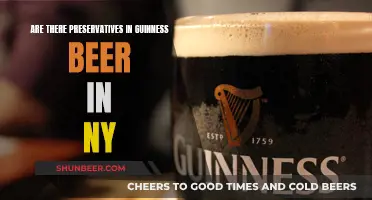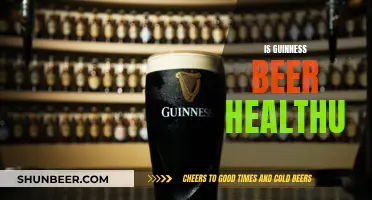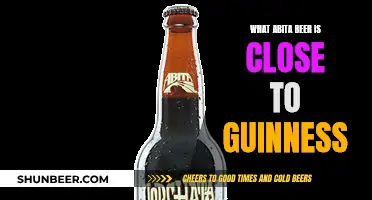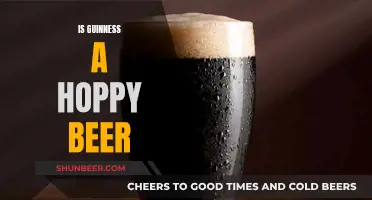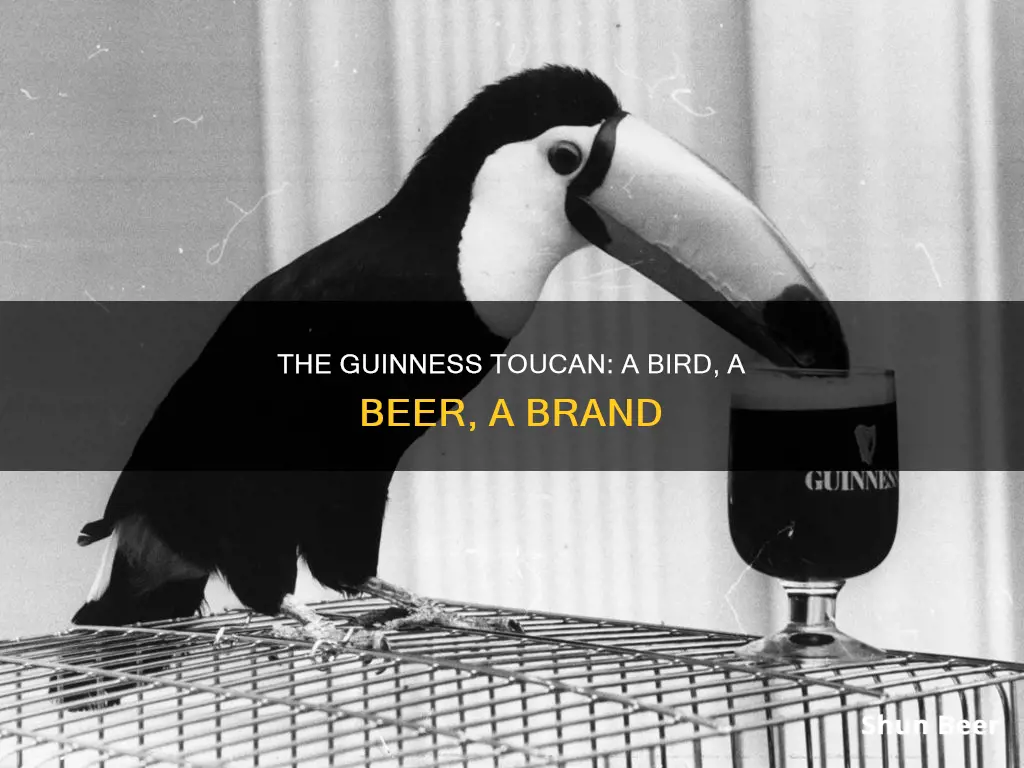
The Guinness Toucan is one of the most recognisable logos in the world. The story of how the tropical bird became the mascot for the Irish stout dates back to the 1930s. In 1935, Guinness hired advertising firm S.H. Benson to boost their marketing efforts. The firm's poster designer, John Gilroy, was tasked with creating a campaign that didn't focus on beer, as the Guinness family thought this would be vulgar. Instead, they wanted to highlight the purported health benefits of the brew, which led to the use of animals in the advertisements. Gilroy's designs included a range of exotic zoo animals, from sea lions to turtles and ostriches, but it was the toucan that became the most famous. The toucan's brightly coloured beak contrasted with two dark glasses of Guinness, and the similarity in pronunciation between two cans and toucan added to the appeal. The toucan has since become synonymous with Guinness and continues to be featured on memorabilia and limited-edition releases.
| Characteristics | Values |
|---|---|
| Date Toucan Became Mascot | 1935 |
| Advertising Firm | S.H. Benson |
| Poster Designer | John Gilroy |
| Copywriter | Dorothy Sayers |
| Reason for Choosing a Toucan | The toucan's brightly coloured beak contrasted with two dark glasses of Guinness. |
| The toucan's beak also played on the homophone of "too can" and "toucan" | |
| The toucan was considered cheerful and colourful | |
| The toucan was used to promote the purported health benefits of the beer |
What You'll Learn
- The toucan was chosen to promote the purported health benefits of the beer
- The colourful beak of the toucan contrasted with two dark glasses of Guinness
- The toucan was used in ads for over 45 years
- The toucan was featured on a range of memorabilia
- The toucan was used in Guinness' American marketing campaigns

The toucan was chosen to promote the purported health benefits of the beer
The Guinness toucan was chosen to promote the purported health benefits of the beer. The story of the toucan mascot dates back to the 1930s when Guinness hired the advertising firm S.H. Benson to boost their marketing efforts. The advertising campaign was led by poster designer John Gilroy and copywriter Dorothy Sayers.
The Guinness family wanted to avoid a campaign specifically about beer, as they thought it would be vulgar. Instead, they wanted to highlight the purported health benefits of the brew. This led to the use of animals in the campaign. Gilroy produced a variety of zoo animals, including a pelican, a sea lion, a turtle, an ostrich, a bear, a kangaroo, and the famous toucan.
The toucan's brightly coloured beak contrasted nicely with two dark glasses of Guinness, and the similar sounds of "too can" and "toucan" created a playful association. Sayers' clever copy elevated the toucan to legendary status. One of her most famous posters read: "Guinness is good for you. How grand to be a Toucan, Just think what Toucan do."
The toucan and its animal friends graced Guinness ads for decades, becoming an enduring and beloved symbol of the brand. The toucan's popularity can be attributed to its colourful and cheerful appearance, as well as the clever and playful advertising campaigns that featured it. Even after Guinness dropped the animal-themed ads in 1982, the toucan has continued to make appearances on limited-edition cans and merchandise, showcasing the lasting impact it has had on the brand and its fans.
The High Price of Guinness Beer: Is It Worth It?
You may want to see also

The colourful beak of the toucan contrasted with two dark glasses of Guinness
The toucan was the brainchild of John Gilroy, an English illustrator and draftsman. Gilroy was hired by advertising firm S.H. Benson in 1935 to create a new campaign for Guinness. The brief was to avoid any direct association with beer, which the Guinness family considered "vulgar". Instead, they wanted to promote the purported health benefits of the brew.
Gilroy's solution was to use animals, and he created a series of designs featuring zoo animals, including a pelican, a sea lion, and a toucan, all with two pints of Guinness balanced on their noses. The toucan, with its colourful beak contrasting against the dark beer, was particularly striking and became an instant success.
The toucan posters were also accompanied by clever copy written by Dorothy Sayers, a crime writer and playwright who worked at the advertising agency. One of the most famous posters read:
> "If he can say as you can
> Guinness is good for you
> How grand to be a Toucan
> Just think what Toucan do."
The toucan became the most enduring of all the Guinness mascots, featuring in the most ads and remaining a beloved symbol of the brand to this day.
Guinness Beer: Unveiling the Secret of Its Strength
You may want to see also

The toucan was used in ads for over 45 years
The Guinness toucan is one of the most recognisable logos in the world. The bird was used in ads for over 45 years, and its large bill and vibrant plumage are eye-catching. The toucan was a natural choice for the brand, as the beer is known for its distinctive flavour and dark colour. The black and white plumage of the toucan also nods to the two key ingredients of Guinness: dark roasted barley and white hops.
The story of the Guinness toucan began in 1930 when the company hired advertising firm S.H. Benson. The artist John Gilroy was tasked with creating an ad featuring a family drinking Guinness, but no one could agree on what the family should look like. Gilroy hit upon the idea of using animals when he took his son to the circus and saw a sea lion balancing a ball on its nose. He then created a series of designs featuring zoo animals, including the toucan, which first appeared in Autumn 1935.
The toucan's brightly coloured beak contrasted with two dark glasses of Guinness, and the similarity in sound between "too can" and "toucan" was also played upon. Dorothy Sayers, a crime writer and playwright, wrote the copy for the ads, including the famous tagline: "Guinness is good for you. How grand to be a Toucan, Just think what Toucan do."
The toucan and its animal friends were featured in Guinness ads for decades, and the toucan became the most enduring and featured in the most ads. Even after Guinness dropped the zoo-themed ads in 1982, the toucan continued to appear on limited-edition cans and merchandise. The bird has made a comeback in recent years, with a limited-edition can released in 2016.
Guinness IPA Beer: GMO and Chemical Mystery Solved
You may want to see also

The toucan was featured on a range of memorabilia
The toucan was also featured on a series of American-specific advertisements in the 1940s and 1950s, flying over landmarks like the Statue of Liberty, the Golden Gate Bridge, Mount Rushmore, and the Empire State Building. These ads were never approved by Guinness. However, the company did release a series of decorative items in 2017, featuring the image of toucans flying over Mount Rushmore to commemorate the 200th anniversary of Guinness in America.
The toucan has become synonymous with Guinness and is one of the most recognizable brand logos in the world. The bird's large bill and vibrant plumage, as well as the contrast between its colours and the dark glasses of Guinness, have made it an enduring symbol of the brand.
Guinness Beer Widget: What's Its Purpose?
You may want to see also

The toucan was used in Guinness' American marketing campaigns
The toucan was used in Guinness American marketing campaigns, with the colourful bird featuring in a series of advertisements created by English illustrator and draftsman John Gilroy. Gilroy, who was born in Newcastle upon Tyne in 1898, was hired by advertising firm S.H. Benson in 1935 to give Guinness' marketing efforts a boost.
The artist created a series of American-specific toucan advertisements in the 1940s and 1950s, featuring the birds flying over iconic US landmarks such as the Golden Gate Bridge, Mount Rushmore and the Empire State Building. However, these ads were never approved for release by Guinness.
The toucan was a natural fit for Guinness' marketing campaigns, with its brightly coloured beak contrasting with two dark glasses of Guinness. The ads also played with the similar sounds of "too can" and "toucan".
The toucan was so successful that it returned on a new range of posters in 1953 and again in the 1980s for a series of humorous television commercials. The bird has become synonymous with Guinness and is one of the most recognisable brand logos in the world.
Guinness Beer's Thick Con: Why the Creamy, Dark Con?
You may want to see also
Frequently asked questions
The toucan was introduced as part of Guinness' illustrated ad campaigns in the early 20th century. The toucan was chosen for its large bill, which is said to symbolise the beer's distinctive flavour, and its black-and-white plumage, which represents the two main ingredients of Guinness: dark roasted barley and white hops.
The toucan mascot was designed by English illustrator and draftsman John Gilroy. Gilroy was working for advertising firm S.H. Benson, which Guinness hired in 1935 to boost its marketing efforts.
One of the most famous toucan posters features the copy: "If he can say as you can 'Guinness is good for you' How grand to be a Toucan Just think what Toucan do." Other toucan ads include the "Guinness Time" campaign: "'I do like,' says the Toucan, 'to be beside the blue. With Guinness time in view can you guess what Toucan do.'"


